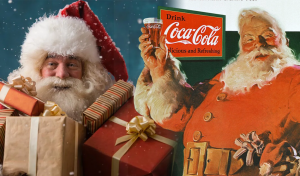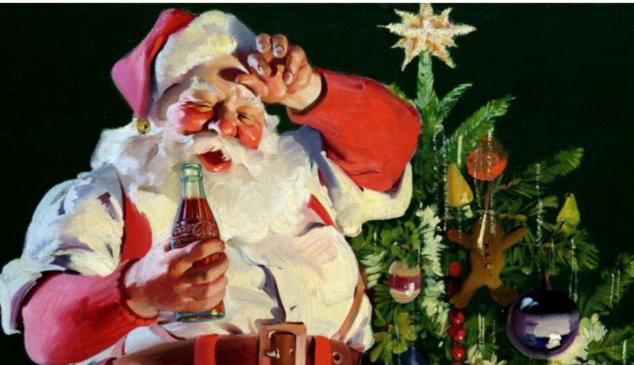In the fascinating world of Christmas, Santa Claus and Coca-Cola are intertwined in a unique strategy that transformed a traditional figure into a global phenomenon.

Behind his iconic figure is more than just tradition; there is also a brilliant marketing strategy that has left a mark in history.
Although the modern version of Santa Claus was popularized by Coca-Cola, his story goes back much further, rooted in the generosity and magic of the season.
Santa Claus Before Marketing Impact:
St. Nicholas of Bari, a 6th century Turkish bishop, is the true forerunner of Santa Claus. His legacy of charity and miracles lays the foundation for the generous figure we know today.
The story of the unmarried daughters and the gold coins thrown down the chimney becomes the germ of the tradition of gifts and chimneys.
From its origin in Holland during the 17th century, Santa Claus traveled with the migrations to the United States, where his image evolved, taking different forms before reaching its most recognizable version.
The visual transformation of Santa Claus took hold with the illustrations of Thomas Nast, who gave him the look we are familiar with today. The commercialization of Christmas gained momentum, and Santa Claus emerged as its central figure.
Coca-Cola Revolutionizes the Santa Claus Figure:
In 1931, Coca-Cola began its masterful marketing strategy by commissioning illustrator Haddon Sundblom to create a Santa Claus to embody the Christmas spirit and happiness associated with the brand.
Inspired by the poem "A Visit From St Nicholas," Sundblom modeled Santa Claus after Lou Prentice, a retired salesman, discarding the elf image and highlighting the character's humanity and joy.
The Keys to the Success of Coca-Cola's Santa Claus Campaign:
- A Great Story: The Santa Claus story, being incomplete, invites audience participation, generating emotional engagement. The narrative, enriched by our personal experiences and versions, has managed to endure over time.
- A Complete Experience: Santa Claus becomes a symbol that goes beyond his physical appearance. He represents the experience of sharing with family, opening gifts and, above all, enjoying a Coca-Cola with loved ones. The brand sells not only a product, but emotions and experiences.
- Not Just Feelings, But Science: Coca-Cola's association with the story of Santa Claus goes beyond the symbolic. The "halo effect" arises: the more we link both entities, the better we perceive the brand, associating it with the values and feelings that the character conveys.
Importance of Christmas Marketing.
Christmas emerges as the peak season for companies, with Coca-Cola and Santa Claus leading the way in holiday campaigns.
In the era of Digital Marketing, companies have powerful tools to build creative and effective strategies, connecting with users through various digital channels.
In short, the figure of Santa Claus, shaped by history and elevated by Coca-Cola's genius, not only personifies generosity and holiday cheer, but also highlights how a marketing strategy can transform a tradition into a global phenomenon.
Christmas, with its festive spirit, thus becomes a unique opportunity for companies looking to connect with their audiences and create lasting experiences.




